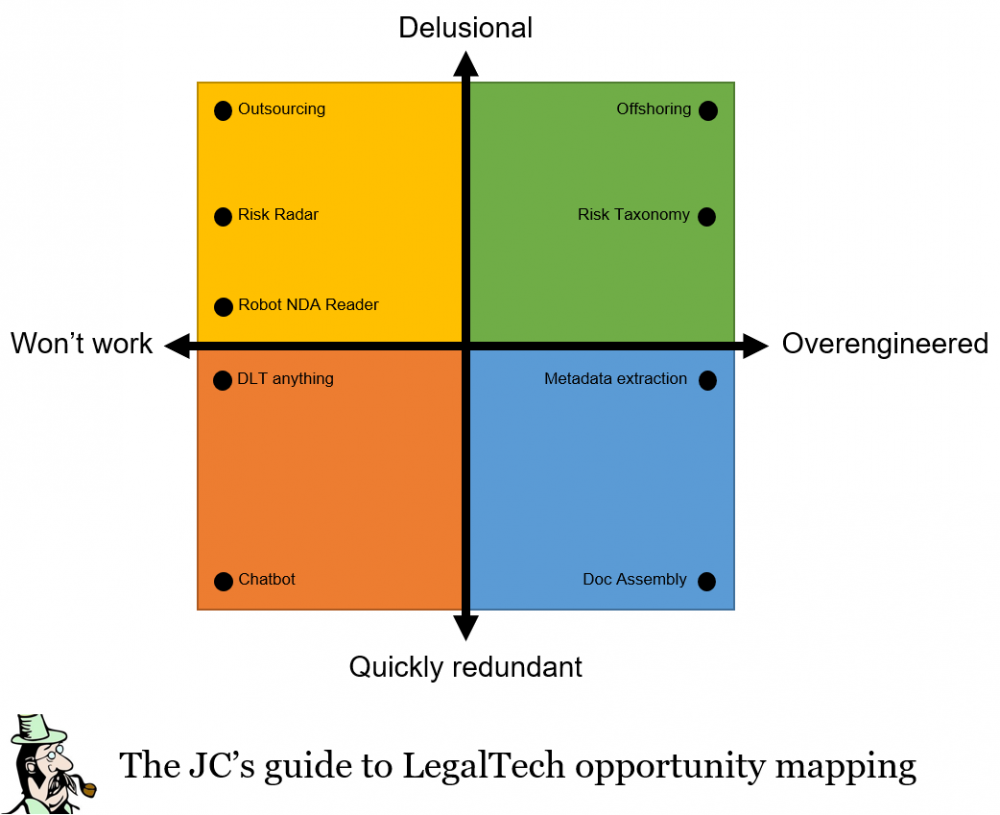Thought leader
|
Office anthropology™
|
Thought leader
/θɔːt ˈliːdə/ (n.)
One who spends his[1] time on prediction — articulating theories, plans, strategies, technologies —to anticipate where things are going, and almost none explaining after the fact — the absence of fact — why they were wrong.
LinkedIn is unusually susceptible to thought-leadership because it is not the done thing to call bullshit in a professional setting.
While the legal industry has changed out of all recognition in the last 40 years — anyone still use a Dictaphone, or communicate by fax? — but in none of the ways legal thought-leaders predicted. It just changed by increments, through tiny, unconcerted, self-interested decisions. It iterated. It evolved.
The one constant throughout has been the facile four-box quadrant, beloved of industry visionaries, routinely advanced in support of whatever hue of fantastical futurism happens to be in season at the time of asking. What populates the quadrant changes, as surely as autumn turns to winter and peak expectations turn to ash, but the idea persists.
The JC’s prediction: the legal industry will continue to evolve, drily, defying all expectations and confounding all predictions of the latter-day seers, visionaries, professors and change instigators. This is not a bold prediction but a statement of the bleeding obvious. Of all the myriad of possible vectors a complex system could move in over an extended period, the odds of it following any single one that you happened to describe in your thought-piece are infinitesimal.
You have as much chance — more, come to think of it — of correctly predicting the flight path of a deflating balloon.
One thing is certain: the fundamental condition for every industry-shaping proposal will be that it enhances “fitness”: not society’s, nor the industry’s, nor the market’s, nor the firm’s and certainly not the customer’s — but of the person making the proposal.
See also
References
- ↑ It used to be largely men, but is less so as time wears on.

